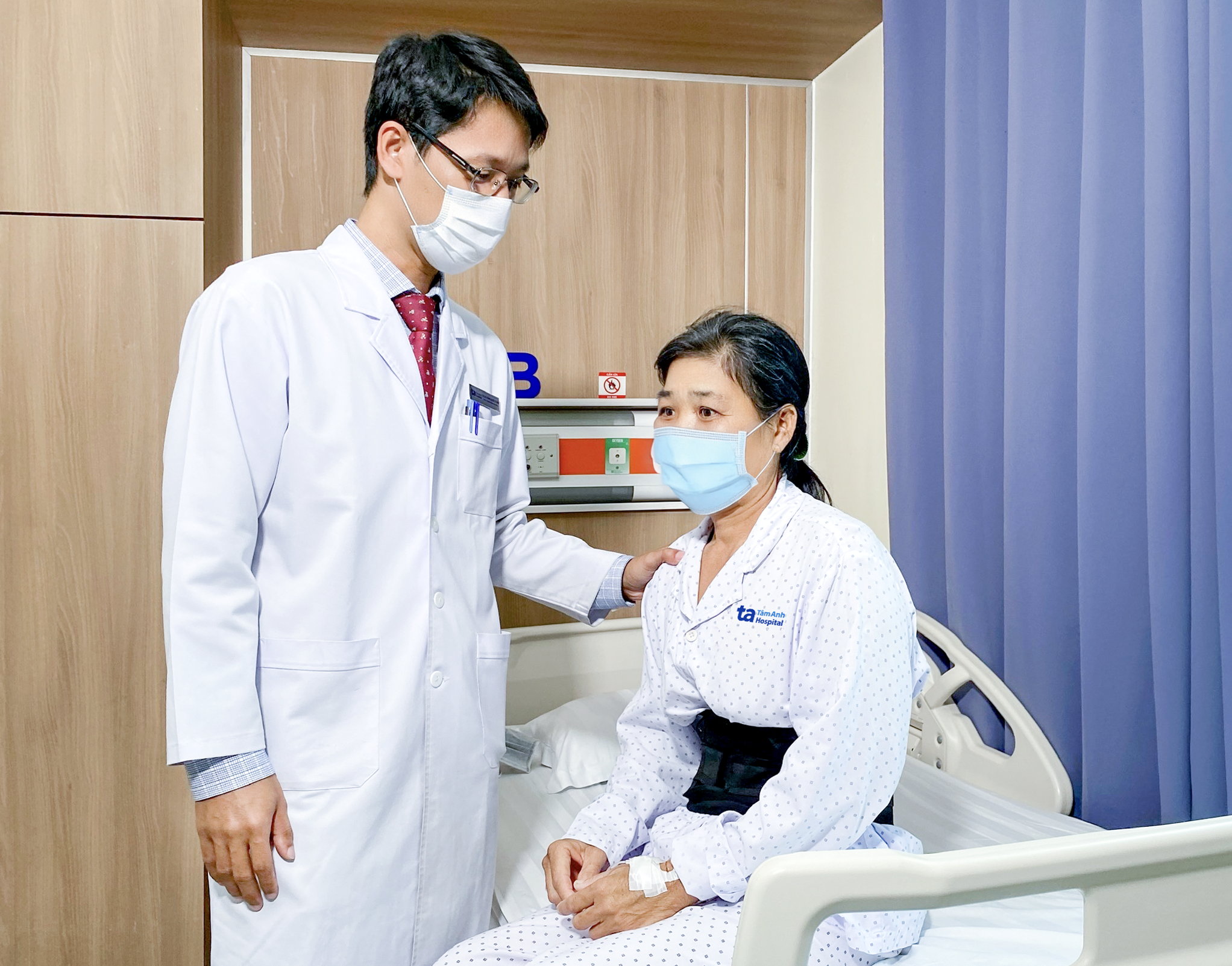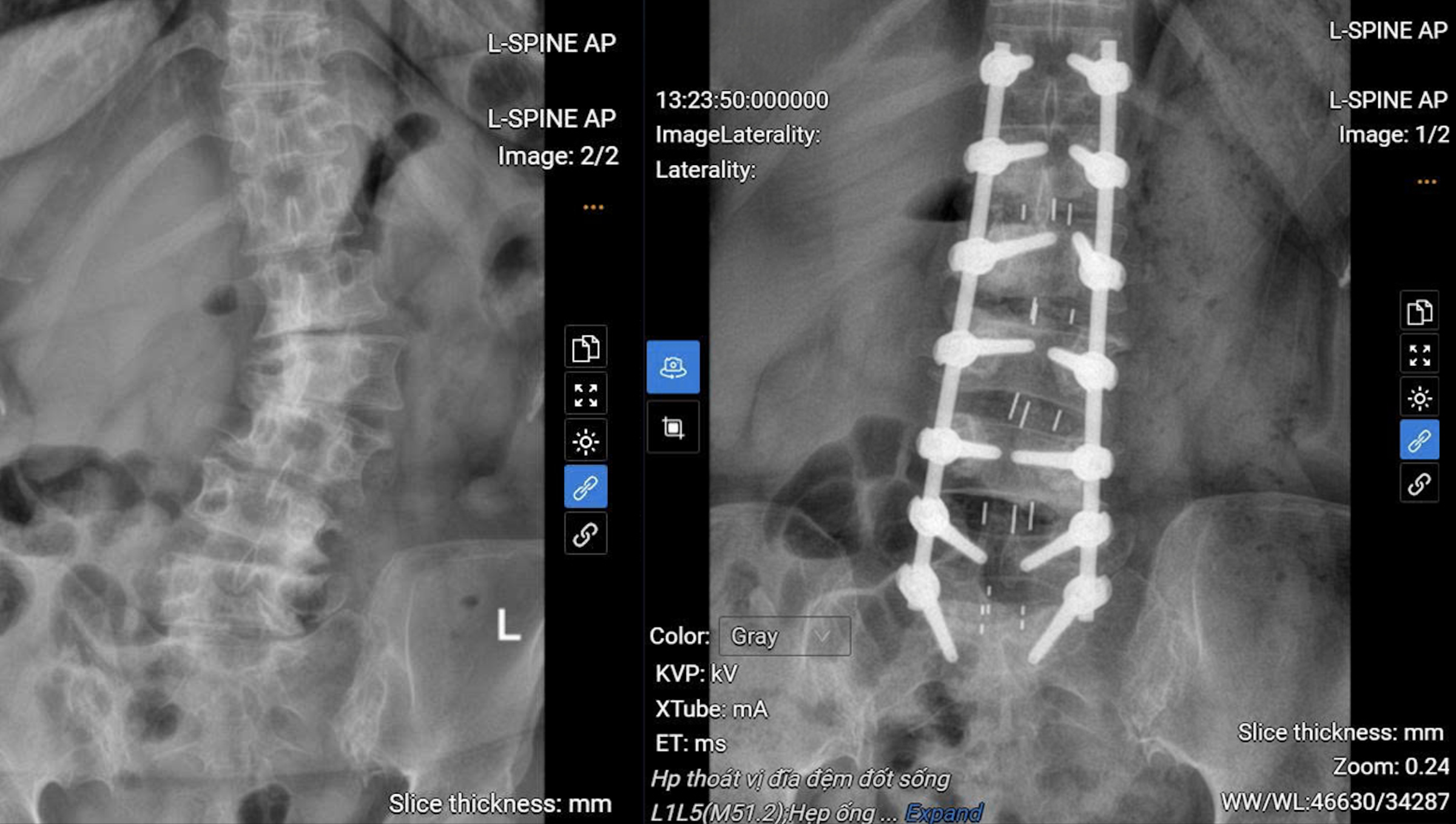Ms. Pha was transferred from a local medical facility to Tam Anh General Hospital, Ho Chi Minh City, experiencing burning pain in her lower back that radiated down both legs. This pain severely impaired her ability to walk and bear weight, causing discomfort after just a few steps and preventing sleep. Dr. Dang Quoc Duan, a Master of Science and medical doctor in the Spine Surgery Department, stated that the patient had long-standing damage from the L1 to S1 vertebrae, including degenerative scoliosis, severe spinal stenosis, and a herniated disc compressing nerves.
Many years ago, doctors recommended surgery, but Ms. Pha opted for conservative treatments such as traditional medicine, thread embedding, and physical therapy. Over time, her condition worsened, and she faced risks of muscle atrophy, difficulty walking, and reduced mobility and self-care abilities. Due to the severe nature of the disease, affecting multiple vertebrae, doctors recommended open surgery.
 |
Dr. Duan explains Ms. Pha's condition. Photo: Tam Anh General Hospital |
Dr. Duan removed the compressing structures and widened the spinal canal, creating space to relieve pressure on the spinal cord and nerve roots. Next, the herniated disc fragments and bone spurs were removed, and a disc replacement was performed to fuse the intervertebral joints, ensuring spinal stability. Finally, the surgeon inserted screws to fix and realign the patient's spine.
A C-arm system assisted the surgeon in accurately positioning the screws, reducing the risk of nerve damage and shortening surgical time. This also minimized blood loss and invasiveness, leading to faster patient recovery. The surgery lasted 5 hours, and 14 screws were used.
On the first day after surgery, Ms. Pha no longer experienced numbness or leg pain, only mild discomfort at the incision site. By day five, she could walk comfortably without assistance and was preparing for discharge.
 |
The patient's spine before (left) and after surgery. Photo: Tam Anh General Hospital |
According to Dr. Duan, the primary cause of Ms. Pha's spinal damage was heavy labor combined with poor posture. Initially, she experienced mild pain, which she dismissed as common muscle soreness, delaying a medical examination. When the condition began to affect her daily activities and surgery was recommended, she continued to postpone treatment. This delay resulted in increasingly severe musculoskeletal imbalance in her lower back, leading to pronounced curvature, worsened spinal stenosis, and a more severe herniated disc.
Dr. Duan advises individuals with musculoskeletal problems not to be complacent and to seek early medical attention. When surgery is recommended, it indicates a severe condition, and patients should adhere to treatment to prevent complications.
Phi Hong












